Olympus BF User manual
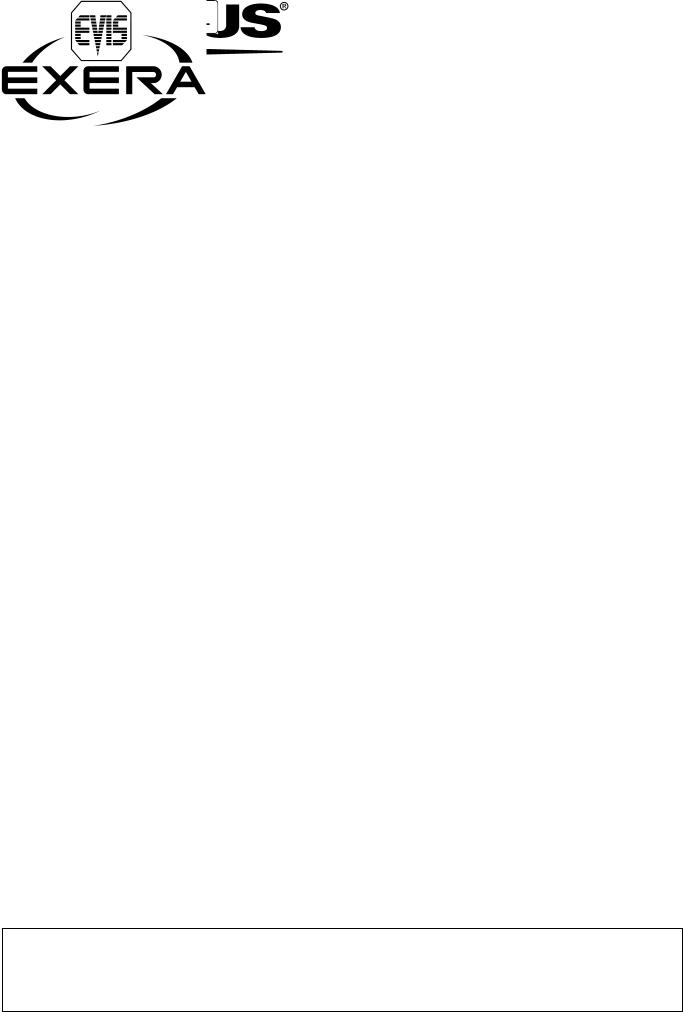
INSTRUCTIONS
EVIS EXERA BRONCHOVIDEOSCOPE
OLYMPUS BF TYPE 160
OLYMPUS BF TYPE P160
OLYMPUS BF TYPE 1T160
OLYMPUS BF TYPE XT160
OLYMPUS BF TYPE 3C160
EVIS EXERA BRONCHOFIBERVIDEOSCOPE
OLYMPUS BF TYPE MP160F
OLYMPUS BF TYPE XP160F
Refer to the endoscope’s companion manual, the “REPROCESSING MANUAL” whose cover lists the model of your endoscope for reprocessing information.
USA: CAUTION: Federal law restricts this device to sale by or on the order of a physician.

|
|
Contents |
Contents |
|
|
Symbols......................................................................................... |
|
1 |
Important Information — Please Read Before Use.................... |
2 |
|
Intended use ............................................................................................ |
2 |
|
Applicability of endoscopy and endoscopic treatment ............................. |
2 |
|
Instruction manual..................................................................................... |
3 |
|
User qualifications .................................................................................... |
3 |
|
Instrument compatibility ............................................................................ |
4 |
|
Reprocessing before the first use/reprocessing and storage after use .... |
4 |
|
Repair and modification ........................................................................... |
4 |
|
Signal words.............................................................................................. |
5 |
|
Warnings and cautions ............................................................................. |
5 |
|
Precaution for disappeared or frozen endoscopic image.......................... |
8 |
|
Examples of inappropriate handling ......................................................... |
9 |
|
Chapter 1 Checking the Package Contents............................ |
10 |
|
Chapter 2 Instrument Nomenclature and Specifications ...... |
12 |
|
2.1 |
Nomenclature.................................................................................. |
12 |
2.2 |
Endoscope functions....................................................................... |
14 |
2.3 |
Specifications.................................................................................. |
15 |
Chapter 3 Preparation and Inspection .................................... |
24 |
|
3.1 |
Preparation of the equipment.......................................................... |
25 |
3.2 |
Inspection of the endoscope ........................................................... |
26 |
3.3 |
Preparation and inspection of accessories ..................................... |
27 |
3.4 |
Attaching accessories to the endoscope ........................................ |
30 |
3.5 |
Inspection and connection of ancillary equipment .......................... |
33 |
3.6 |
Inspection of the endoscopic system .............................................. |
35 |
Chapter 4 |
Operation ................................................................. |
37 |
4.1 |
Insertion .......................................................................................... |
39 |
4.2 |
Using endo-therapy accessories..................................................... |
42 |
4.3 |
Withdrawal of the endoscope.......................................................... |
49 |
4.4 |
Transportation of the endoscope .................................................... |
50 |
BF TYPE 160 Series OPERATION MANUAL |
i |

Contents
Chapter 5 |
Troubleshooting ...................................................... |
51 |
5.1 |
Troubleshooting guide .................................................................... |
52 |
5.2 |
Withdrawal of the endoscope with an abnormality.......................... |
55 |
5.3 |
Returning the endoscope for repair................................................. |
56 |
Appendix........................................................................................ |
|
57 |
System chart ............................................................................................ |
57 |
|
ii |
BF TYPE 160 Series OPERATION MANUAL |
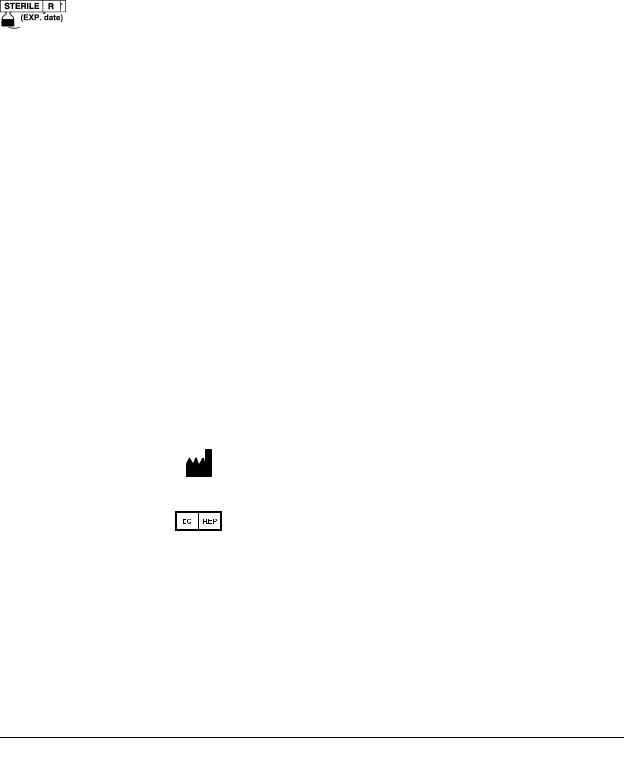
Symbols
Symbols
The meaning(s) of the symbol(s) shown on the package with the components, the back cover of this instruction manual and/or this instrument are as follows:
Refer to instructions.
Endoscope
TYPE BF applied part
Lot number
Do not reuse.
Use by (expiration date)
Sterilization lot number
Sterilized using irradiation
Manufacturer
Authorised representative in the European Community
BF TYPE 160 Series OPERATION MANUAL |
1 |

Important Information — Please Read Before Use
Important Information — Please Read
Before Use
Intended use
These instruments have been designed to be used with an Olympus video system center, light source, documentation equipment, video monitor, endo-therapy accessories (such as biopsy forceps) and other ancillary equipment for endoscopy and endoscopic surgery within the airways and tracheobronchial tree.
Do not use these instruments for any purpose other than their intended uses.
Applicability of endoscopy and endoscopic treatment
If there is an official standard on the applicability of endoscopy and endoscopic treatment that is defined by the medical administration or other official institutions such as academic societies on endoscopy or pulmonology, follow that standard. Before starting endoscopy and endoscopic treatment, thoroughly evaluate its properties, purposes, effects, and possible risk (their natures, extent and probability). Perform endoscopy and endoscopic treatment only when its potential benefits are greater than its risks.
Fully explain to the patient the potential benefits and risks of the endoscopy and endoscopic treatment as well as the examination/treatment methods that can be performed in its place, and perform the endoscopy and endoscopic treatment only after obtaining the consent of the patient.
Even after starting the endoscopy and endoscopic treatment, continue to evaluate the potential benefits and risks, and immediately stop the endoscopy/treatment and take proper measures if the risks to the patient become greater than the potential benefits.
2 |
BF TYPE 160 Series OPERATION MANUAL |

Important Information — Please Read Before Use
Instruction manual
This instruction manual contains essential information on using this instrument safely and effectively. Before use, thoroughly review this manual and the manuals of all equipment which will be used during the procedure and use the equipment as instructed.
Note that the complete instruction manual set for this endoscope consists of this manual and the “REPROCESSING MANUAL” whose cover lists the model of your endoscope. It also accompanied the endoscope at shipment.
Keep this and all related instruction manuals in a safe, accessible location.
If you have any questions or comments about any information in this manual, please contact Olympus.
User qualifications
The operator of this instrument must be a physician or medical personnel under the supervision of a physician and must have received sufficient training in clinical endoscopic technique. This manual, therefore, does not explain or discuss clinical endoscopic procedures. For details on the clinical endoscopic procedures, the physician and operator are requested to form judgments from their viewpoints as specialists.
BF TYPE 160 Series OPERATION MANUAL |
3 |

Important Information — Please Read Before Use
Instrument compatibility
Refer to the “System chart” in the Appendix to confirm that this instrument is compatible with the ancillary equipment being used. Using incompatible equipment can result in patient or operator injury and/or equipment damage.
Reprocessing before the first use/reprocessing and storage after use
This instrument was not cleaned, disinfected or sterilized before shipment. Before using this instrument for the first time, reprocess it according to the instructions given in the endoscope’s companion manual, the “REPROCESSING MANUAL” whose cover lists the model of your endoscope.
After using this instrument, reprocess and store it according to the instructions given in the endoscope’s companion reprocessing manual. Improper and/or incomplete reprocessing or storage can present an infection control risk, cause equipment damage or reduce performance.
Repair and modification
This instrument does not contain any user-serviceable parts. Do not disassemble, modify or attempt to repair it; patient or operator injury and/or equipment damage can result. This instrument is to be repaired by Olympus technicians only.
4 |
BF TYPE 160 Series OPERATION MANUAL |

Important Information — Please Read Before Use
Signal words
The following signal words are used throughout this manual:
Indicates a potentially hazardous situation which, if not avoided, could result in death or serious injury.
Indicates a potentially hazardous situation which, if not avoided, may result in minor or moderate injury. It may also be used to alert against unsafe practices or potential equipment damage.
Indicates additional helpful information.
Warnings and cautions
Follow the warnings and cautions given below when handling this instrument. This information is to be supplemented by the warnings and cautions given in each chapter.
•Never perform electrosurgery with the BF-3C160/MP160F/XP160F, because the distal ends of these instruments are not insulated. Patient injury can result.
•After using this instrument, reprocess and store it according to the instructions given in the endoscope’s companion reprocessing manual. Using improperly or incompletely reprocessed or stored instruments may cause patient cross-contamination and/or infection.
•Do not strike, bend, hit, pull, twist, or drop the endoscope’s distal end, insertion tube, bending section, control section, universal cord, or endoscope connector with excessive force. The endoscope may be damaged and could cause patient injury, such as burns, bleeding, and/or perforation. It could also cause parts of the endoscope to fall off inside the patient.
BF TYPE 160 Series OPERATION MANUAL |
5 |

Important Information — Please Read Before Use
•Never perform angulation forcibly or suddenly. Never forcefully pull or twist the angulated bending section. Patient injury, bleeding and/or perforation can result. It may also become impossible to straighten the bending section during use and/or to withdraw this instrument from the patient. Particular caution is required in the tracheal bifurcation region.
•Never operate the bending section, perform suction, insert or withdraw the endoscope’s insertion tube without viewing the endoscopic image. Patient injury can result.
•Never insert or withdraw the endoscope while the endoscope’s bending section is locked in position. When withdrawing the endoscope, the bending section should follow the form of the body cavity as much as possible. Otherwise, patient injury, bleeding and/or perforation can result. It may also become impossible to straighten the angle during use and/or to withdraw this instrument from the patient.
•Never use endo-therapy accessories without viewing the endoscopic image. Patient injury can result.
•Never operate the bending section, perform suction, insert or withdraw the endoscope’s insertion tube while the image is frozen. Patient injury can result.
•Never use endo-therapy accessories while the image is frozen. Patient injury can result.
•Do not touch the light guide of the endoscope connector immediately after removing it from the light source because it is extremely hot. Operator or patient burns can result.
•Never insert or withdraw the insertion tube suddenly, abruptly or with excessive force. Patient injury, bleeding and/or perforation can result.
•Be sure to prepare another endoscope to avoid that the examination be interrupted due to equipment failure or malfunction.
•When the endoscopic image does not appear on the monitor, the CCD may have been damaged. Turn the video system center OFF immediately. Continued power supply in such a case will cause the distal end to become hot and could cause operator and/or patient burns.
6 |
BF TYPE 160 Series OPERATION MANUAL |

Important Information — Please Read Before Use
•Do not pull the universal cord during an examination. The endoscope connector will be pulled out from the output socket of the light source and the endoscopic image will not be visible.
•Do not coil the insertion tube or universal cord into a diameter of less than 12 cm. Equipment damage can result.
•Do not apply shock to the distal end of the insertion tube, particularly the objective lens surface at the distal end. Visual abnormalities may result.
•Do not twist or bend the bending section with your hands. Equipment damage may result.
•Do not squeeze the bending section forcefully. The covering of the bending section may stretch or break and cause water leaks.
•The endoscope’s remote switches cannot be removed from the control section. Pressing, pulling or twisting them with excessive force can break the switches and/or may cause water leaks.
•Do not attempt to bend the endoscope’s insertion tube with excessive force. Otherwise the insertion tube may be damaged.
•The endoscope contains a memory chip that stores information about the endoscope and communicates this information to the CV-160. Although the memory chip is durable, damage will prevent data from being backed up on it. When data are lost or damaged, contact Olympus.
BF TYPE 160 Series OPERATION MANUAL |
7 |

Important Information — Please Read Before Use
Precaution for disappeared or frozen endoscopic image
•If the endoscopic image unexpectedly disappears or the frozen image cannot be restored during an examination, immediately stop using the instrument and withdraw the endoscope from the patient. Continued use of the endoscope in such condition may cause patient injury, bleeding and/or perforation.
•Follow the precautions given below. Otherwise, the endoscopic image may disappear unexpectedly or the frozen image may not be restored during the examination.
−Connect the endoscope connector, videoscope cable and video system center completely. Otherwise, faulty contact can result.
−Do not bend, hit or twist the insertion section, control section, universal cord and endoscope connector. The endoscope may be damaged and water leaks and/or breakage of internal parts like CCD cable can result.
−Before inserting the endoscope, place the mouthpiece in the patient’s mouth in order to prevent the patient from biting the insertion section. Biting the insertion section may result in breakage of the CCD cable or light guide.
−Before immersing the endoscope, always attach the water-resistant cap. Otherwise, water will enter the endoscope and may cause short of the internal circuit. This may result in breakage of the switch and CCD.
−If bubbles emerge from the endoscope continuously during leakage test, do not use the endoscope. Water may enter from the hole and short the internal circuit. This may result in breakage of the switch and CCD.
•Turn the video system center OFF before connecting or disconnecting the videoscope cable from the electrical connector on the endoscope. Turn the switch ON or OFF only when the videoscope cable is connected to both the video system center and electrical connector on the endoscope. Failure to do so can result in equipment damage, including destruction of the CCD.
•Do not touch the electrical contacts inside the electrical connector. CCD damage may result.
8 |
BF TYPE 160 Series OPERATION MANUAL |

Important Information — Please Read Before Use
•Do not hit or bend the electrical contacts on the endoscope connector. The connection to the light source may be impaired and faulty contact can result.
Examples of inappropriate handling
Details on clinical endoscopic technique are the responsibility of trained specialists. Patient safety in endoscopic examinations and endoscopic treatment can be ensured through appropriate handling by the physician and the medical facility. Examples of inappropriate handling are given below.
•Applying prolonged suction with the distal end in contact with the mucosal surface may cause bleeding or suction lesions.
•The endoscope has not been designed for use in retroflexed observation. Performing retroflexed observation in a narrow lumen may make it impossible to straighten the angle of the bending section and/or withdraw the endoscope from the patient.
•Inserting, withdrawing and using endo-therapy accessories without a clear endoscopic image may cause burns or perforation.
•Inserting or withdrawing the endoscope, applying suction or operating the bending section without a clear endoscopic image may cause patient injury.
BF TYPE 160 Series OPERATION MANUAL |
9 |

Chapter 1 Checking the Package Contents
Chapter 1 Checking the Package
Contents
Match all items in the package with the components shown below. Inspect each item for damage. If the instrument is damaged, a component is missing or you have any questions, do not use the instrument; immediately contact Olympus. This instrument was not disinfected or sterilized before shipment.
Before using this instrument for the first time, reprocess it according to the instructions given in the endoscope’s companion manual, the “REPROCESSING MANUAL” whose cover lists the model of your endoscope.
Endoscope
Channel cleaning brush (BW-15B, not for BF-3C160/XP160F)
Channel cleaning brush |
|
(BW-7B, for |
Single-use suction valve |
BF-3C160/XP160F) |
(MAJ-209, 20 pcs) |
Suction connector |
Channel-opening |
Single-use biopsy valve |
cleaning brush |
cleaning brush |
(MAJ-210, 20 pcs) |
(BW-15SH, for |
(MH-507) |
|
BF-3C160/XP160F) |
|
|
Suction cleaning adapter (MAJ-222)
Mouthpiece |
Water-resistant cap |
|
|
(MA-651, 2 pcs) |
Operation manual |
Reprocessing manual |
|
|
(MH-553) |
||
|
|
|
10 |
BF TYPE 160 Series OPERATION MANUAL |

Chapter 1 Checking the Package Contents
BF TYPE 160 Series OPERATION MANUAL |
11 |
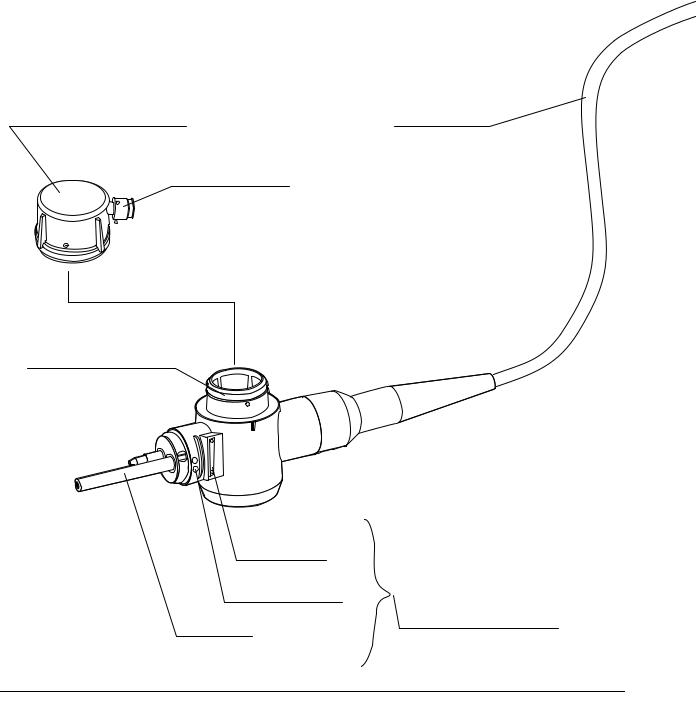
Chapter 2 Instrument Nomenclature and Specifications
Chapter 2 Instrument Nomenclature
and Specifications
2.1Nomenclature
Water-resistant cap (MH-553) |
Universal cord |
Venting connector
2. Electrical connector
Serial number |
|
Electrical contacts |
|
Light guide |
1. Endoscope connector |
|
12 |
BF TYPE 160 Series OPERATION MANUAL |

Chapter 2 Instrument Nomenclature and Specifications
3.UP/DOWN angulation control lever
Control section
4. Single-use suction valve (MAJ-209)
Suction cylinder
Slit
5.Single-use biopsy valve (MAJ-210)
Instrument channel
6. Instrument channel port
7. Color code
Boot
Insertion tube/working length
9. Remote switches
Suction cylinder |
Distal end |
|
|
|
8. Bending section |
9. Remote switches |
|
Top view
BF TYPE 160 Series OPERATION MANUAL |
13 |
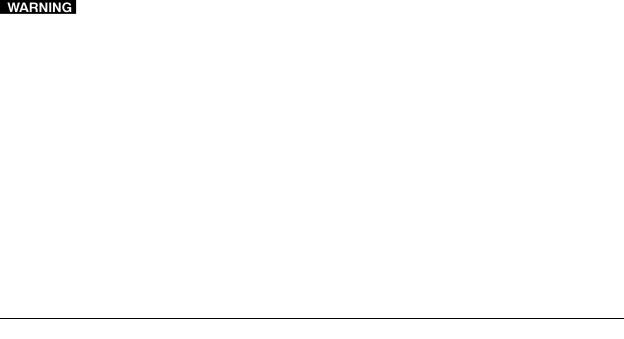
Chapter 2 Instrument Nomenclature and Specifications
2.2Endoscope functions
1.Endoscope connector
This connector connects the endoscope to the output socket of the light source and transmits light from the light source to the endoscope.
2.Electrical connector
This connector connects the endoscope to the video system center via the videoscope cable. The endoscope contains a memory chip that stores information about the endoscope and communicates this information to the video system center CV-160. For more details, refer to the instruction manual of the CV-160.
3.UP/DOWN angulation control lever
When this lever is turned in the “U” direction, the bending section moves UP; when the lever is turned in the “D” direction, the bending section moves DOWN.
4.Single-use suction valve (MAJ-209)
This valve is depressed to activate suction. The valve is used to remove any fluid and debris that obstruct the visual field.
5.Single-use biopsy valve (MAJ-210)
Accessories may be inserted through the slit in this valve. A syringe may be inserted for the introduction of fluids.
6.Instrument channel port
This channel port functions as:
−channel for the insertion of endo-therapy accessories
−suction channel
−fluid feed channel (from a syringe via the biopsy valve)
The BF-1T160 instrument channel has an inner diameter of
ø2.8 mm, but only endo-therapy accessories with an outer diameter of ø 2.6 mm (green) should be used. If the endo-therapy accessories with an outer diameter of
ø2.8 mm (yellow) are used, the instrument may be damaged.
14 |
BF TYPE 160 Series OPERATION MANUAL |
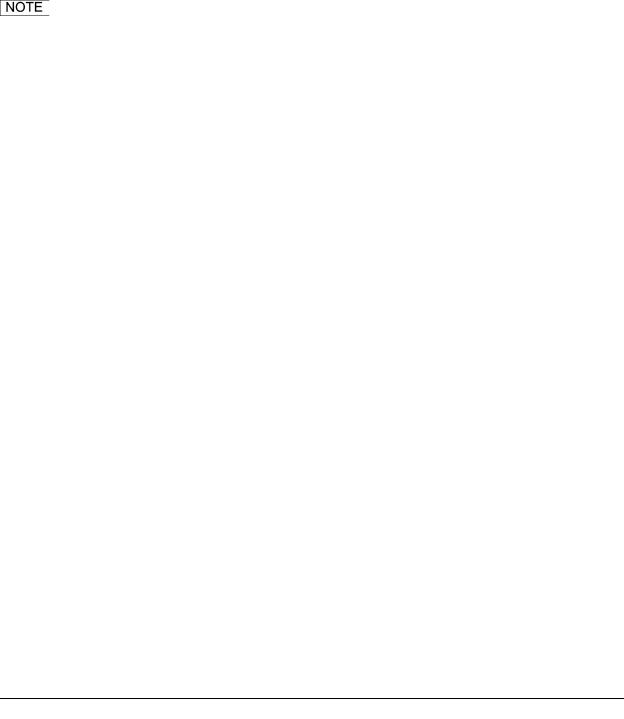
Chapter 2 Instrument Nomenclature and Specifications
7.Color code
This code is used to quickly determine the compatibility of endo-therapy accessories. The endoscope can be used with endo-therapy accessories that have the same color code.
• Blue |
: |
BF-160, BF-P160, BF-MP160F |
|
• Green |
: |
BF-1T160 |
|
• |
Yellow |
: |
BF-XT160 |
• |
White |
: |
BF-3C160, BF-XP160F |
Some BF-3C160 does not have color code. If you use endo-therapy accessories with the BF-3C160, refer to the “System chart” in the Appendix for help in selecting compatible endo-therapy accessories.
8.Bending section
This section moves the distal end of the endoscope when the UP/DOWN angulation control lever is operated.
9.Remote switches 1 to 4
The functions of the remote switches 1 to 4 can be selected on the video system center. When selecting the functions, refer to the instruction manual for the video system center.
2.3Specifications
The BF-MP160F/XP160F differ from a general videoscope. The endoscopic image is transmitted to the control section by the image guide and converted into an electrical signal with the CCD in the control section.
Operating environment
Operating |
Ambient temperature |
10 |
– 40°C (50 – 104°F) |
|
environment |
|
|
|
|
Relative humidity |
30 |
– 85% |
||
|
||||
|
|
|
||
|
Air pressure |
700 – 1060 hPa |
||
|
|
(0.7 – 1.1 kgf/cm2) |
||
|
|
(10.2 – 15.4 psia) |
||
|
|
|
|
|
BF TYPE 160 Series OPERATION MANUAL |
15 |
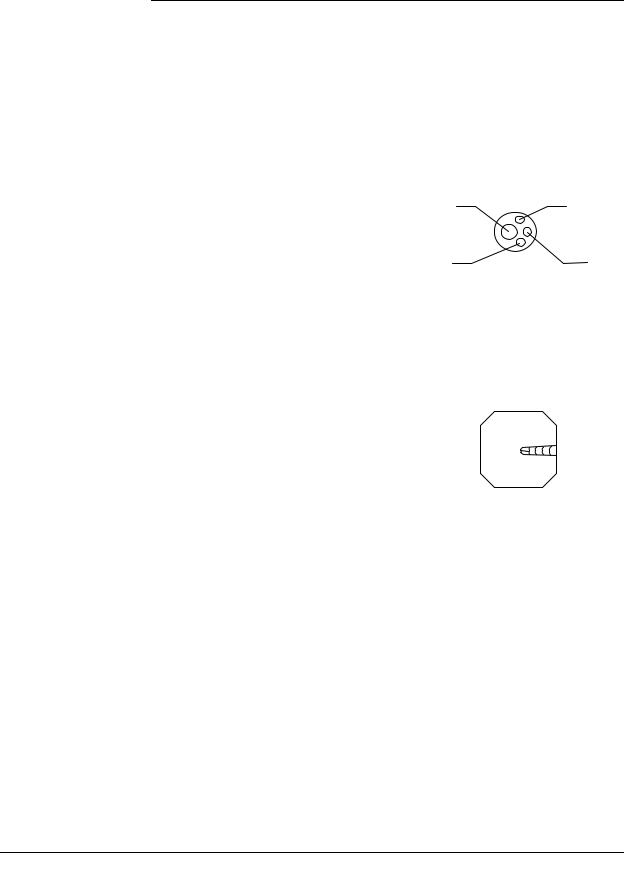
Chapter 2 Instrument Nomenclature and Specifications
Specifications
Model |
|
|
BF-160 |
|
|
|
|
|
|
|
|
Optical |
Field of view |
|
120° |
|
|
system |
|
|
|
|
|
Direction of view |
|
Forward viewing |
|||
|
|
||||
|
|
|
|
|
|
|
Depth of field |
|
3 – 100 mm |
|
|
|
|
|
|
|
|
Insertion tube |
Distal end outer diameter |
|
ø 5.3 mm |
|
|
|
|
|
|
||
|
Distal end enlarged |
1. Objective lens |
|
||
|
|
2. Light guide lens |
|
||
|
|
3. Instrument channel outlet |
|||
|
|
3. |
UP |
2. |
|
|
|
2. |
DOWN |
1. |
|
|
|
|
|
||
|
|
|
|
|
|
|
Insertion tube outer |
|
ø 5.2 mm |
|
|
|
diameter |
|
|
||
|
|
|
|
||
|
|
|
|
|
|
|
Working length |
|
600 mm |
|
|
|
|
|
|
|
|
Instrument |
Channel inner diameter |
|
ø 2.0 mm |
|
|
channel |
|
|
|
|
|
Minimum visible distance |
3 mm from the distal end |
||||
|
|||||
|
|
|
|
|
|
|
Direction from which |
|
|
|
|
|
endo-therapy accessories |
|
|
|
|
|
enter and exit the |
|
|
|
|
|
endoscopic image |
|
|
|
|
|
|
|
|
|
|
Bending |
Angulation range |
UP 180°, DOWN 130° |
|||
section |
|
||||
|
|
|
|
||
|
|
|
|
|
|
Total length |
|
|
870 mm |
|
|
|
|
|
|
|
|
16 |
BF TYPE 160 Series OPERATION MANUAL |
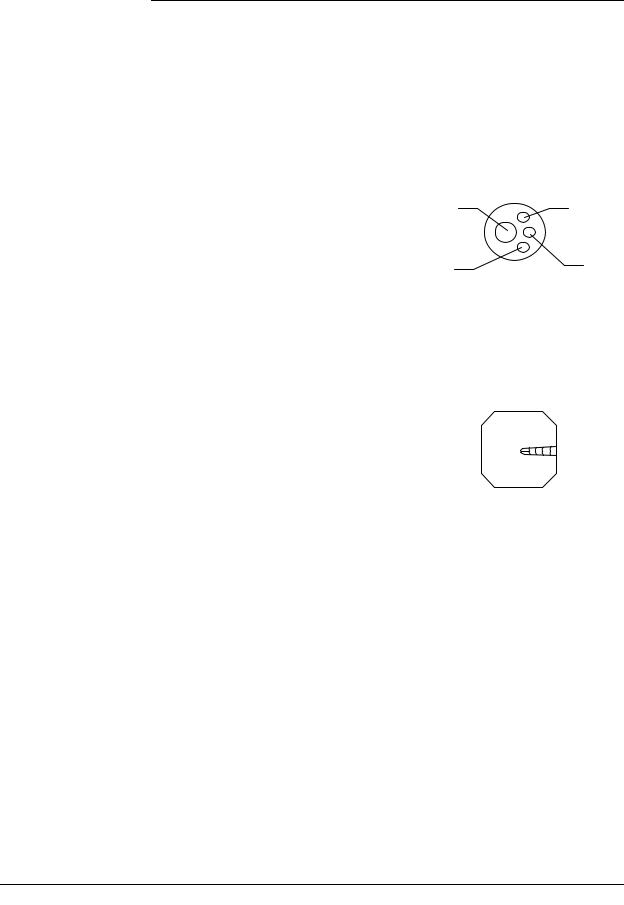
Chapter 2 Instrument Nomenclature and Specifications
Model |
|
|
BF-P160 |
|
|
|
|
|
|
|
|
Optical |
Field of view |
|
120° |
|
|
system |
|
|
|
|
|
Direction of view |
|
Forward viewing |
|||
|
|
||||
|
|
|
|
|
|
|
Depth of field |
|
3 – 100 mm |
|
|
|
|
|
|
|
|
Insertion tube |
Distal end outer diameter |
|
ø 4.8 mm |
|
|
|
|
|
|
||
|
Distal end enlarged |
1. Objective lens |
|
||
|
|
2. Light guide lens |
|
||
|
|
3. Instrument channel outlet |
|||
|
|
3. |
UP |
2. |
|
|
|
|
|||
|
|
2. |
DOWN |
1. |
|
|
|
|
|
||
|
|
|
|
|
|
|
Insertion tube outer |
|
ø 4.9 mm |
|
|
|
diameter |
|
|
||
|
|
|
|
||
|
|
|
|
|
|
|
Working length |
|
600 mm |
|
|
|
|
|
|
|
|
Instrument |
Channel inner diameter |
|
ø 2.0 mm |
|
|
channel |
|
|
|
|
|
Minimum visible distance |
3 mm from the distal end |
||||
|
|||||
|
|
|
|
|
|
|
Direction from which |
|
|
|
|
|
endo-therapy accessories |
|
|
|
|
|
enter and exit the |
|
|
|
|
|
endoscopic image |
|
|
|
|
|
|
|
|
|
|
Bending |
Angulation range |
UP 180°, DOWN 130° |
|||
section |
|
||||
|
|
|
|
||
|
|
|
|
|
|
Total length |
|
|
870 mm |
|
|
|
|
|
|
|
|
BF TYPE 160 Series OPERATION MANUAL |
17 |
